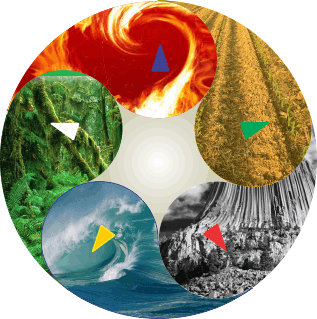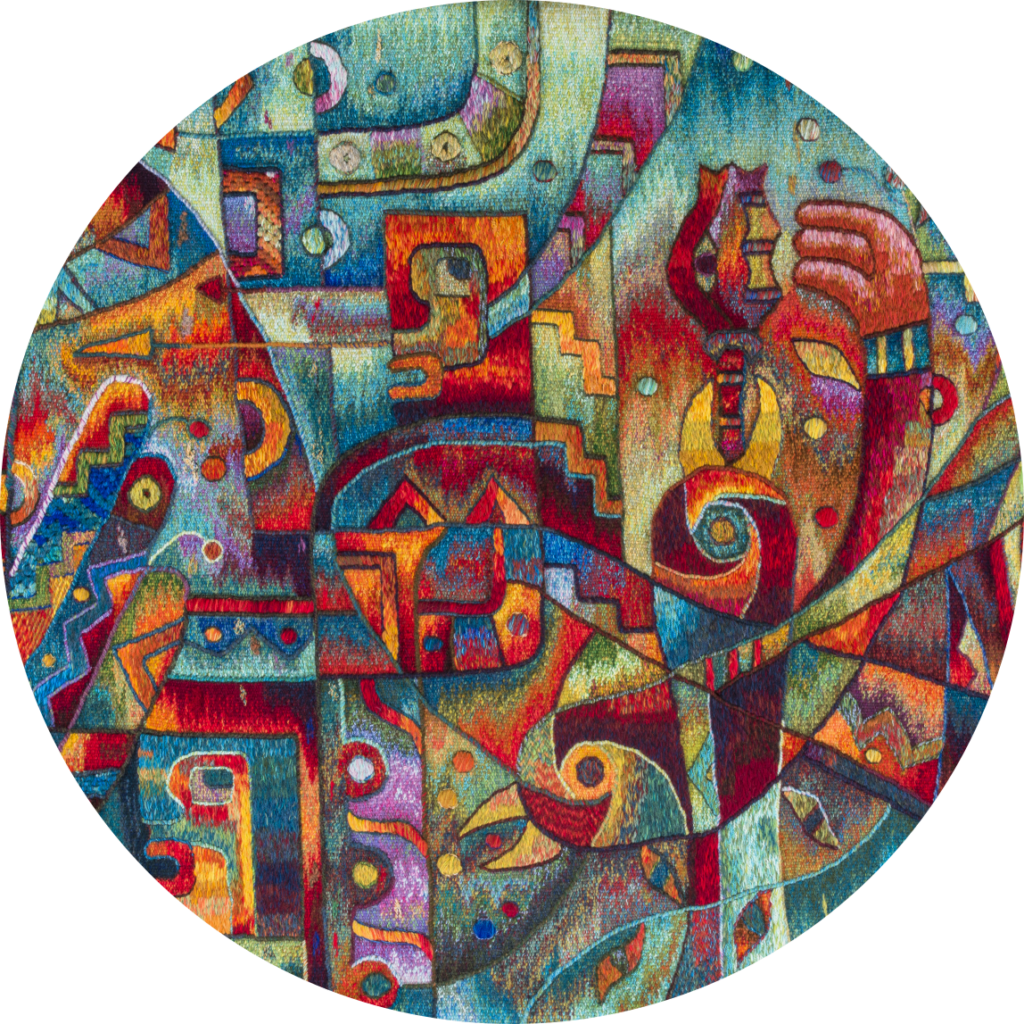Five Element Acupuncture

Five Element Acupuncture (5EA) is based on the ancient worldview of the Five Elements (or Five Phases of Change). It is a time-proven tradition of constitutional medicine based on simple, yet profound and ubiquitous, relational patterns in the primal energetic processes of nature. Our bodies are of nature and we each embody a specific process pattern that persists throughout our life (as does our face or the character of our voice or our fingerprints). The core of this process is referred to in 5EA as the CF or Causative Factor.
Unlike in the more commonly available forms of acupuncture in which a diagnosis is made by sorting symptoms into syndromes, diagnosis and treatment in 5EA is primarily guided by the practitioner’s direct sensing (seeing, hearing, smelling and feeling) of the structure of the CF and the corresponding need of the patient. The CF manifests on all the levels of Body, Mind and Spirit. There is not the artificial separation induced by the fundamentally materialistic and dualistic approach of conventional Western medicine and its allied approaches.
When the CF is treated and the person’s acupuncture pulses are brought into greater balance and strengthened, there is greater vitality and well-being. Diminished preoccupation with dysfunction often comes early in the sequence of the resolution of symptoms.
It is axiomatic that it is better for us to have the cause of our symptoms addressed than it is to simply take away the symptoms—even as it better to treat a glowing red oil light in a car by adding oil than by cutting the wires to the bothersome light.
Because 5EA works on the constitutional level, bringing more energetic balance and vitality, it is applicable to a wide range of conditions and is often a remarkably superior approach for chronic, recurrent, emotional, “psychosomatic” and psychospiritual conditions.
Coaching and Counseling

My coaching and counseling approaches rely on two constitutional paradigms: I primarily use the Five Element worldview as a guide with acupuncture clients and the Enneagram with coaching clients and with counseling clients for whom it is a good fit. These ways of viewing are similar to personality typologies or profiles in that each person has a specific constitution or type–yet they are fundamentally different in that the constitutional paradigms go much deeper, touch much more directly upon the nature of individuals and their inner process, are much more multifaceted and precise, and they have an intrinsic organic coherence. They are more like lenses into the nature of the person than they are collections of descriptive attributes.
The Enneagram, in its proper use, profoundly strengthens the individual’s capacity for self-observation which can also lead to greater capacity to understand others in their profound differences.
The constitutional approach is efficient, comprehensive and effective. By providing a well-developed guide map, it supports self-inquiry and gives the ongoing focus needed to bring one’s specific core wounds and needs to light, along with the specific defenses and other habitual patterns that have grown up around these. Recognizing and developing the capacity to be present to these core patterns results in more inner spaciousness, greater contact with reality and more capacity to be present and to have choice in how one will act.
I work to facilitate, by way of shared presence and in-the-moment support, the client in being present with—neither identifying with nor rejecting—the flow of in-the-moment experience. Intrinsic to this approach is the development of the capacity to feel from the body as a way to resource being present with the emotional and mental levels. The development and use of this “felt-sensing” can dissolve one’s prison of fixed conceptual structures and bring integration, autonomy, centeredness, and equilibrium. Its development is what frees the client from the need for the counselor.
Specific techniques that can be called on for the development of felt-sensing include Focusing, Life-Nourishing Communication, Qigong practices and work with dreams.
Organizational Development

So often a conscious living system, be it an individual or a team or an entire organization, is limited in its growth and development by internal blockages of which it is unaware. Dissolving such blockages usually requires work at the individual and at the group levels. With the approaches we use, once such system blockages have been worked through, the living system itself identifies the required changes for forward movement.
The removal of said blockages supports connectedness, relation and rapport, and as we tune the interdependence to best support the process of manifestation, the system is supported in opening to greater energy throughput with more efficient and creative functioning. The system becomes more alive, with increased capacity for self-organizing and distributed leadership.
Here, as for individual coaching, I use the Enneagram as the primary constitutional lens on team and organizational functioning. As a map of any complete system, any self-equilibrating, self-generating system, the Enneagram can be applied to the functioning of a team or organization in a way similar to how it is applied to humanity. Along with the other principals of Synergy 9 Consulting, I have developed what we have come to call the Enneagram of Synergy℠.
The Enneagram of Synergy℠ (EoS) is so called for both the integrated, synergistic application of the Enneagram of Personality and the Enneagram of Process and for the synergy that results from the nine points working coherently together in the process of manifestation. (Click here for a two-page paper describing the EoS in more detail.)
From one to nine, the points of the EoS map the sequential stages of the manifestation process. The inner lines of the EoS map how each point is a guide to the process at another point. Typically, the EoS is used to address a team’s current issue or concern by supporting an guided traversal of the inner lines, working the functionality at each point. The EoS can also be used as an assessment tool for the strengths of the organization in each of the nine functions. These processes show explicitly what functions have been blocked or forgotten in the team functioning and support the team in opening to and integrating the basic nine functions.
